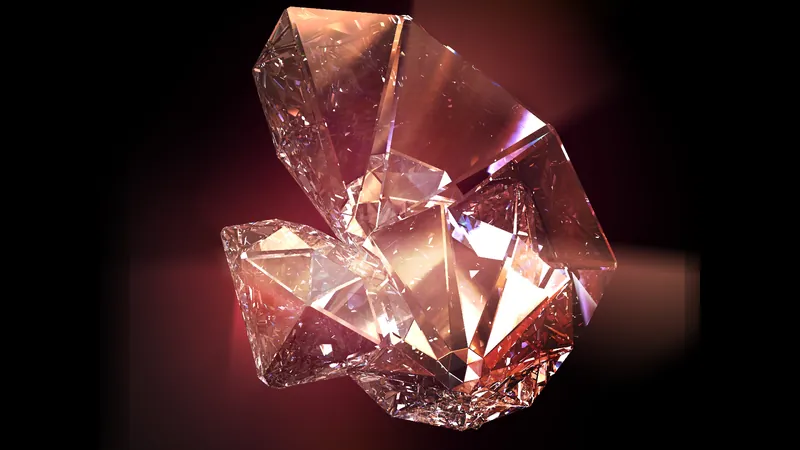
Breakthrough Discovery: Scientists Create Meteorite Diamond That's 50% Harder Than Earth Diamonds!
2025-08-16
Author: Olivia
The Revolutionary Meteorite Diamond
In an exhilarating scientific breakthrough, researchers have successfully synthesized the first sizable meteorite diamond, known as lonsdaleite or hexagonal diamond—promising to be a staggering 50% harder than the diamonds we find on Earth!
What Makes Meteorite Diamonds Special?
Traditionally, diamonds are celebrated as the hardest natural materials on the planet due to their unique atomic structure. Each carbon atom bonds in a tetrahedral configuration, creating an incredibly strong crystal lattice. However, this newly discovered meteorite diamond possesses a different crystalline structure that could outperform its conventional counterparts in toughness and durability.
Unlocking the Secrets of Hexagonal Diamond
Proposed back in the 1960s, the hexagonal structure was theorized after small, impure crystals were found in the Canyon Diablo meteorite, which crashed to Earth around 50,000 years ago. This unique formation consists of two bond lengths—one shorter and one longer than in traditional cubic diamonds—yielding a distinctive hexagonal arrangement that scientists believe enhances hardness by an astounding 58%!
The Challenges of Synthesis
Creating a sample large enough for comprehensive study has proven extremely difficult. Many skeptics doubted whether hexagonal diamonds truly existed due to contamination from other carbon forms in meteorite samples, including graphite and cubic diamonds.
Innovative Lab Techniques
Driven by the mystery surrounding the Canyon Diablo fragment, Wenge Yang and a dedicated team from Beijing's Center for High Pressure Science and Technology Advanced Research employed cutting-edge methods to replicate the extreme conditions of a meteorite impact. Using a diamond anvil cell, they compressed purified graphite under high pressure and applied targeted laser heat, transforming it into a hexagonal diamond structure.
Confirming Their Groundbreaking Achievement
The team meticulously analyzed their new crystal with state-of-the-art techniques. Despite some impurities, the hexagonal structure was confirmed through electron microscopy and X-ray crystallography.
What’s Next for Meteorite Diamonds?
Experts are excited about the potential applications for this ultra-hard material in industries ranging from precision machinery to high-performance electronics. While the immediate availability of larger, purer samples is still a few years away, the scientific community is buzzing with anticipation. “Our ultimate goal is to produce high-quality hexagonal diamond samples for real-world applications,” Yang stated, emphasizing the transformative potential of this material.
A New Era in Diamond Technology?
With plans to tailor the properties of hexagonal diamonds for specific technological needs, we may soon witness a revolutionary shift in industrial technologies and quantum applications. Could this mark the dawn of a new era in diamond technology? Only time will tell, but the future looks incredibly promising!









 Brasil (PT)
Brasil (PT)
 Canada (EN)
Canada (EN)
 Chile (ES)
Chile (ES)
 Česko (CS)
Česko (CS)
 대한민국 (KO)
대한민국 (KO)
 España (ES)
España (ES)
 France (FR)
France (FR)
 Hong Kong (EN)
Hong Kong (EN)
 Italia (IT)
Italia (IT)
 日本 (JA)
日本 (JA)
 Magyarország (HU)
Magyarország (HU)
 Norge (NO)
Norge (NO)
 Polska (PL)
Polska (PL)
 Schweiz (DE)
Schweiz (DE)
 Singapore (EN)
Singapore (EN)
 Sverige (SV)
Sverige (SV)
 Suomi (FI)
Suomi (FI)
 Türkiye (TR)
Türkiye (TR)
 الإمارات العربية المتحدة (AR)
الإمارات العربية المتحدة (AR)